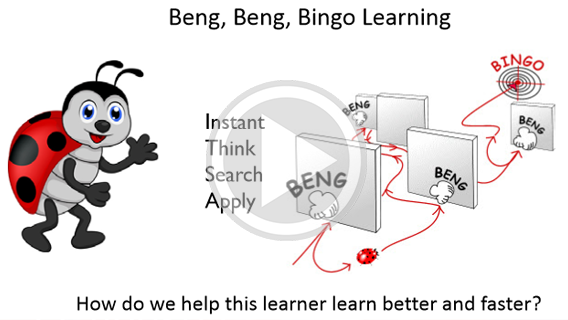Learners learn by trial and error.
Which is better - trial and error or scientific learning? Why?
Have you experienced learning quickly by committing an error or mistake?

View the recording session to shed more insights on learning through trial and error.
Click here to download the PDF handout.
Tips:
- Start objectives by asking them what they hope to learn within the confines of the topics.
- Ask what errors they experienced and discovered, and what have they learned from them.
- Encourage them to share how they would handle a difficult situation.
- Request them to search in company records the cases and incidents that taught people the lessons.
- Cite current practices that were introduced because of a complaint or incident.
An example : In one company, all meetings now start with a few minutes on safety policies and procedures in case of fire or related accident.
- Focus on highest value, errors, workarounds and solution.
Use workarounds as a learning approach. Translated positively this means problem solving, troubleshooting, tricks, maneuvers, shortcuts, best solutions, etc.
Identify high impact work and business performance areas. - Simplify content: deliberate reduction.
Discover immediately useful content to solve problems. - Teach learners to ask 5 questions.
Select a topic then ask:
a. What/why do I want? - Objectives
b. What do I know now? - Draw out experience and knowledge
c. What is fun to discover? - Find the fun part
d. What do I want to try? - Encourage exploration/adventure
e. How do I feel? - Appeal to emotions - Facilitate learning by introducing hints.
So... always leave room for trial and error, even if you have pretty good-looking lessons created as your labor of love. Don't clip your learners' wings, cut off their imagination or frustrate their need to play.
Ray Jimenez, PhD
Vignettes Learning
"Helping Learners Learn Their Way"

No comments:
Post a Comment
Welcome! Sharing your comments is very valuable learning experience for me and others. Thanks!